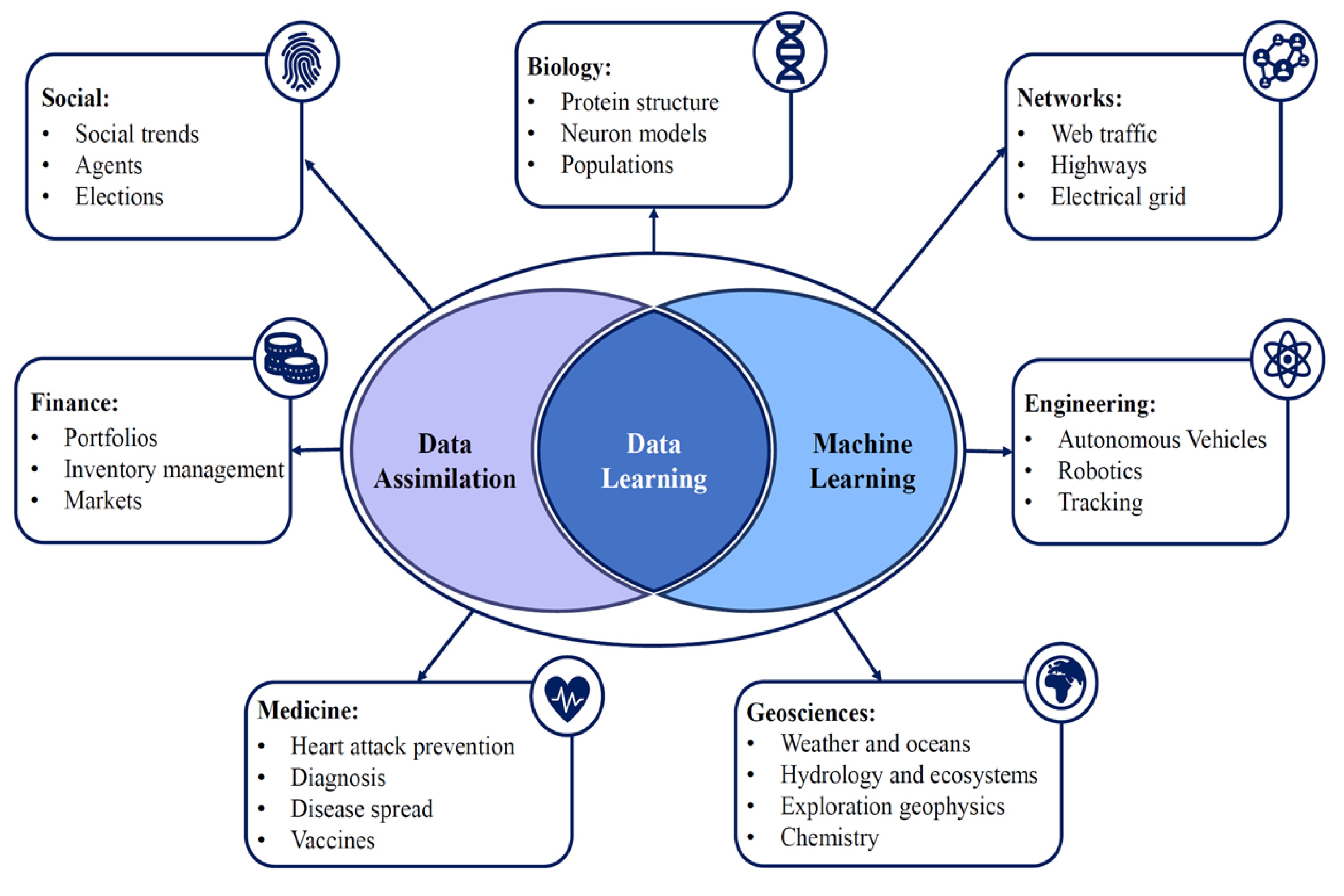Current research areas
Digital twins
The DataLearning group's research uses digital twins - a digital model and data representating a real-world environment or scenario - as the basis of scientific analysis. When developing a digital twin, many fundamental questions exist - some are connected with the data and its reliability and uncertainty, whilst others relate to how dynamic models update to stay valid.
Data assimilation
To combine a model and data, data assimilation is used. Data assimilation involves approximating the true state of a physical system by combining real-world observations with a dynamic model. Data assimilation models are sophisticated but can present unrealistic assumptions.
Machine learning
Machine learning is used to overcome some of the limitations of data assimilation as machine learning can approximate nonlinear systems and extract meaningful features from high-dimensional data. By combining data assimilation and machine learning algorithms, data can be trained to produce more reliable forecasting models, that offer meaningful predictions in time and space.
Data learning
Data learning integrates data assimilation and machine learning to overcome the limitations in applying these fields to real-world data. Read more about the group's work here.
